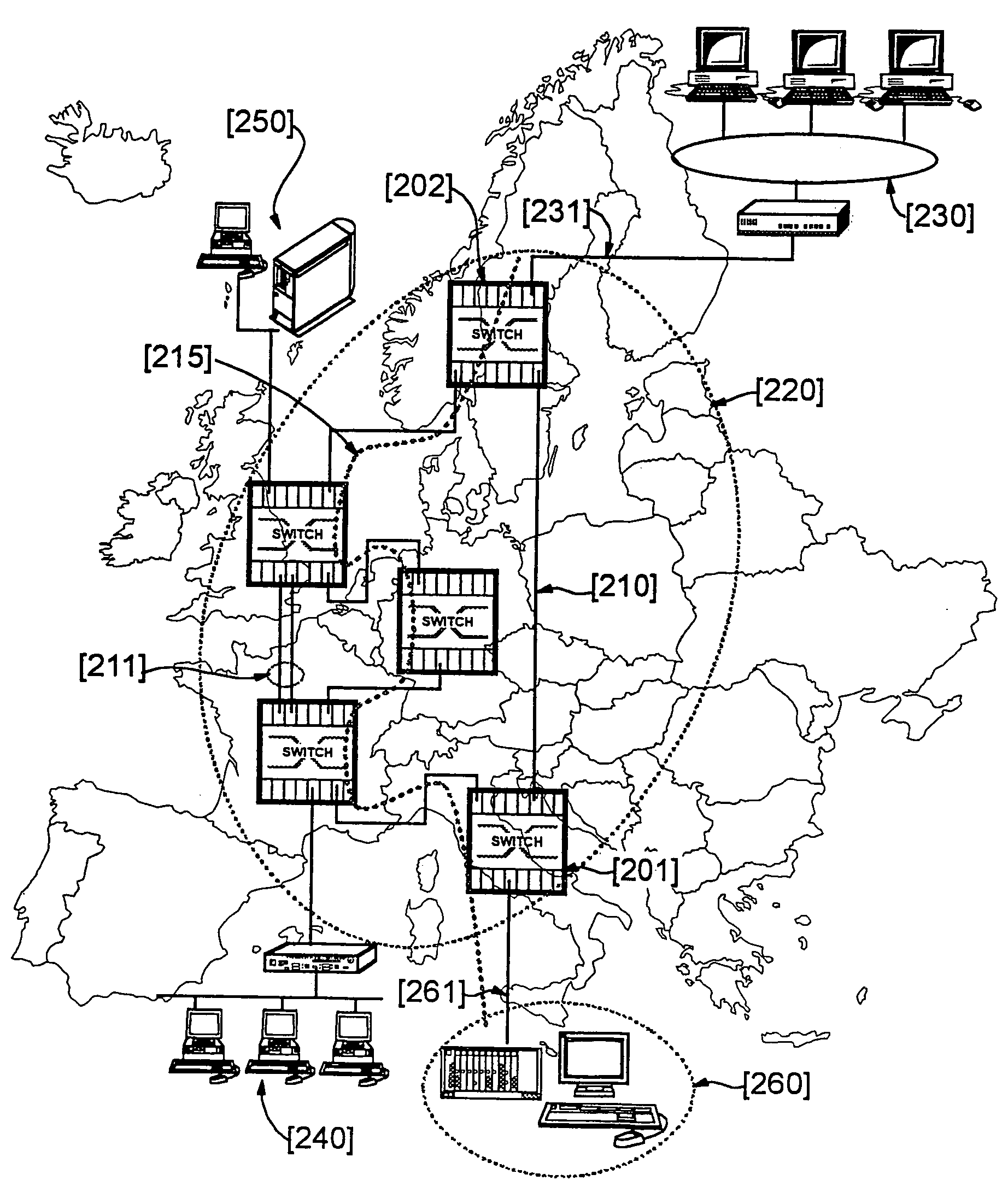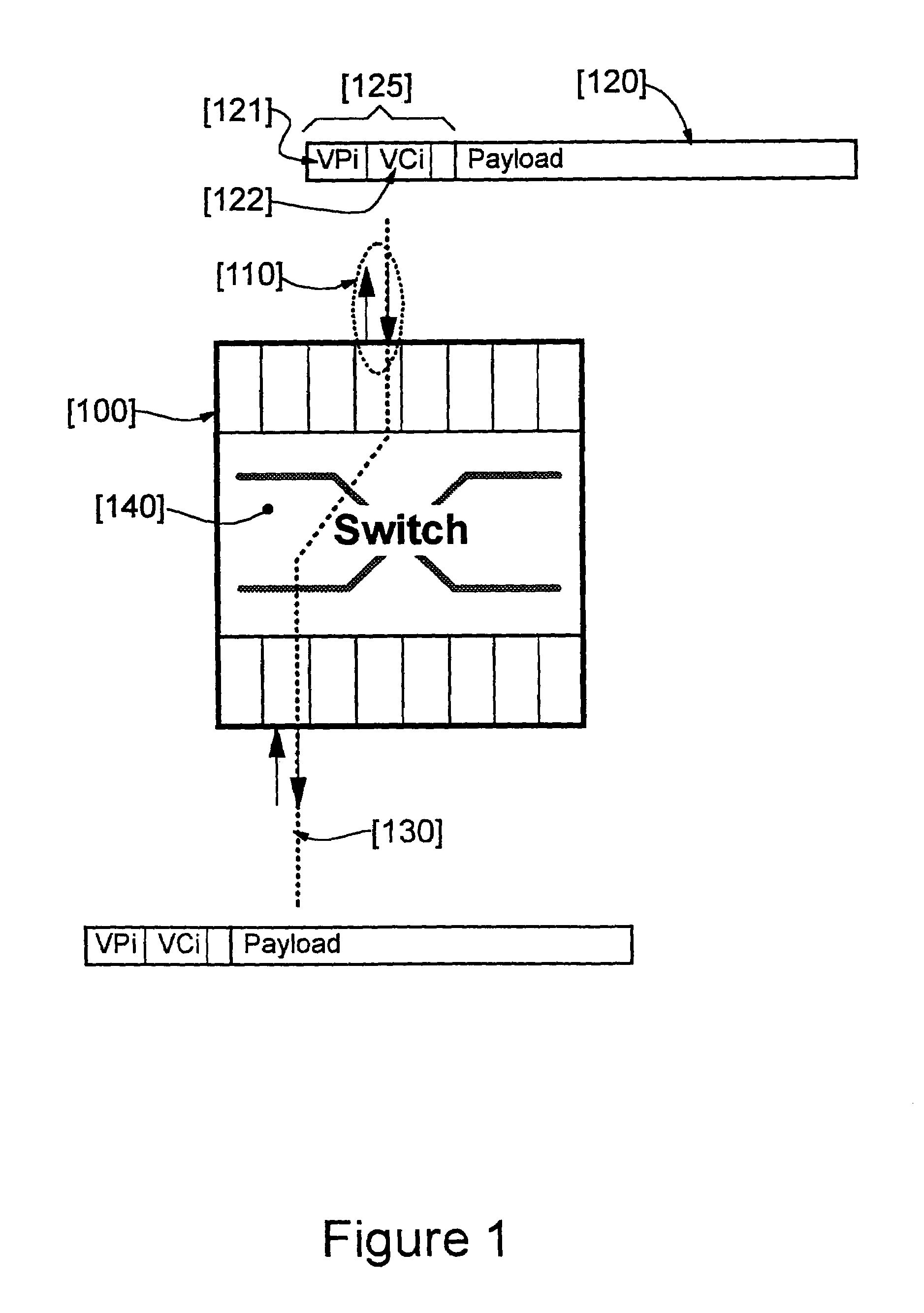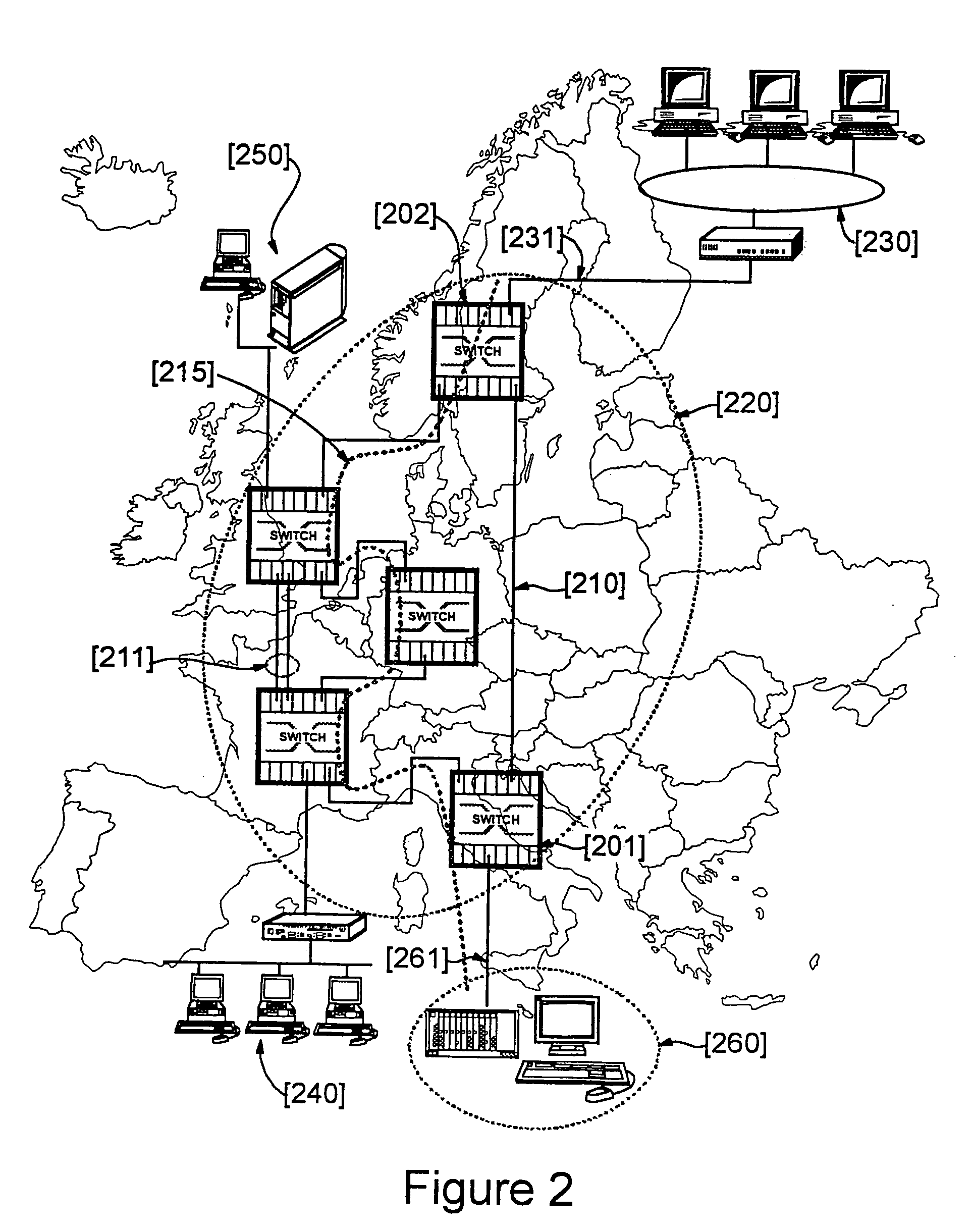System and method for enabling remote surveillance of ATM network switching node ports
a network switching and remote monitoring technology, applied in data switching networks, digital transmission, electrical devices, etc., can solve problems such as inability to observe, internal conflict of switch fabrics, and inability to detect traffic congestion in nodes, and achieve the effect of convenient observation
- Summary
- Abstract
- Description
- Claims
- Application Information
AI Technical Summary
Benefits of technology
Problems solved by technology
Method used
Image
Examples
Embodiment Construction
[0022]With reference now to the figures and in particular with reference to FIG. 1, there is illustrated an ATM switch 100. In this figure, as an example, a 16×16 port switch 100 is shown. Each of the 16 ports, such as port 110, is a bi-directional port capable of receiving and sending ATM cells 120 carrying a connection identifier under the form of a VPi (Virtual Patch identifier) 121 and a VCi (Virtual Channel identifier) 122 part of the header 125 of every cell.
[0023]Switch 100 performs two basic jobs. First, it identifies the connection identifier of every incoming cell from the VPi and VCi fields mentioned hereinabove. Switch 100 then transports cells from input ports to output ports (e.g. 130) along a predetermined path towards their final destinations. The actual transport is carried out via a switching fabric 140 that provides dynamic transmission paths between the input ports and the output ports requested at any given time in such a way that the fewest possible conflicts o...
PUM
 Login to View More
Login to View More Abstract
Description
Claims
Application Information
 Login to View More
Login to View More - R&D
- Intellectual Property
- Life Sciences
- Materials
- Tech Scout
- Unparalleled Data Quality
- Higher Quality Content
- 60% Fewer Hallucinations
Browse by: Latest US Patents, China's latest patents, Technical Efficacy Thesaurus, Application Domain, Technology Topic, Popular Technical Reports.
© 2025 PatSnap. All rights reserved.Legal|Privacy policy|Modern Slavery Act Transparency Statement|Sitemap|About US| Contact US: help@patsnap.com



